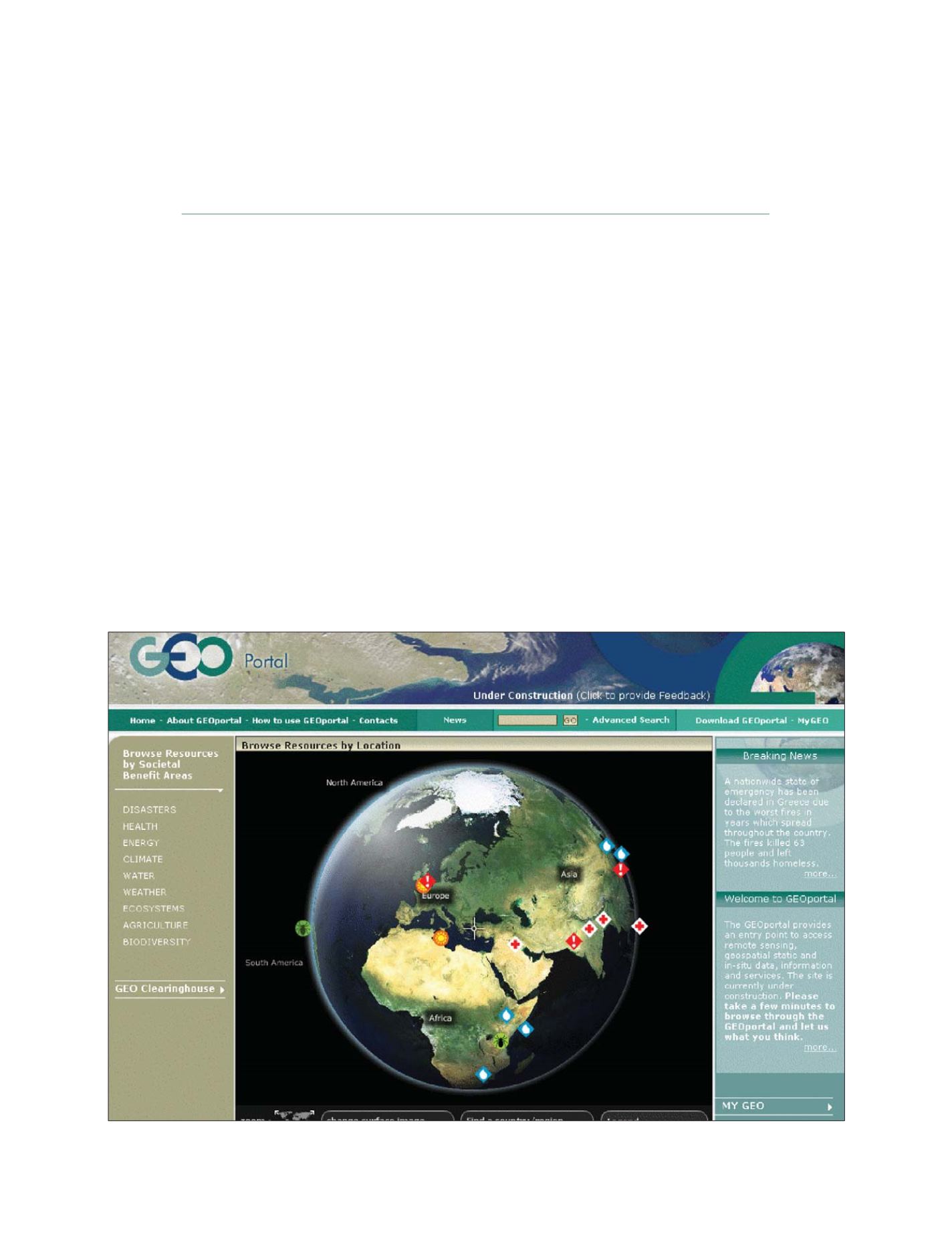

[
] 112
The GEOPortal – gateway to GEOSS
Hermann Ludwig Moeller and Jolyon Martin, European Space Agency
I
n the era of the Internet and over the past decade, many orga-
nizations have created their presence on the World Wide Web.
Typically, this is achieved through the establishment of portals
– information systems publicly accessible from the Internet and
providing information related to the organization it is represent-
ing. In many cases portals are used to publicize the services of an
organization and to establish an entry point to reach and make
use of services. Such Portals are often of corporate nature, and
they are managed and controlled centrally by the organization they
represent. However, there are portals that may represent a group
of organizations that have decided to appear as a Community.
These portals are also referred to as ‘community portals.’ Typically,
the way of presenting the community is agreed between that
community’s members. Such community portals are often oper-
ated by one member of the community on behalf of its members.
Portals in Earth observation
Following the evolution of the Internet, and within the
Earth observation community, individual portals and
community portals advertise and provide access to
resources. Today, in many instances, such portals can
be considered a commodity. In some cases, several
members and organizations have established a
community portal, for instance for their group of users
or for the geographical region they are serving. An
example of such a community portal is the eoPortal
(www.eoportal.org) originally developed by the Joint
Research Centre of the European Commission under
the name Information for Earth Observation (INFEO);
this has been further developed and is operated today
by the European Space Agency (ESA).
A sample GEOPortal home page with global geographical access and access according to GEO Societal Benefit Area
Source: www.geoportal.org
GEOSS C
OMPONENTS
– D
ISSEMINATION
/I
NFORMATION
S
YSTEMS
















